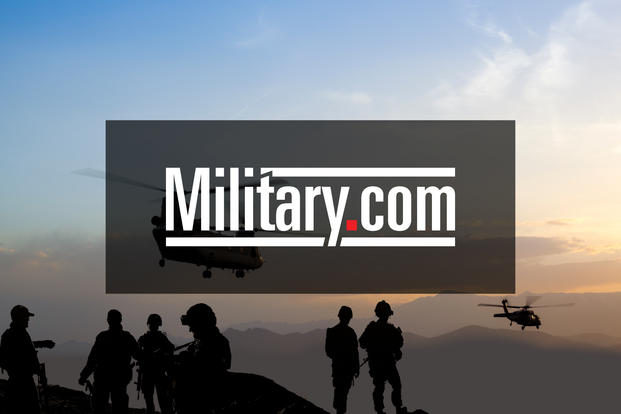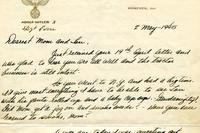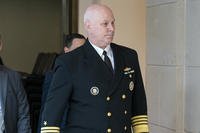Twenty-one armored bulldozers supplied by the U.S. played a key role in the successful assault by Iraqi Security Forces (ISF) on Ramadi's city center but Islamic State holdouts posed a continuing threat, a U.S. military spokesman in Baghdad said Tuesday.
In a sign that Ramadi had not been fully secured, Iraqi Prime Minister Haider al-Abadi was forced to cut short a victory visit to the city Tuesday when three mortar rounds hit about 500 meters from his convoy into the city.
Abadi had arrived by helicopter and toured the devastated city in a convoy of Humvees with the governor of Anbar province. Abadi's party greeted jubilant soldiers and crossed over a portable bridge thrown up earlier this month with the guidance of Army engineers from the 814th Multi-Role Bridging Company based at Fort Polk, Louisiana.
Despite the persistent threat of ISIS snipers and booby-trapped buildings, "We don't think the remaining enemy has the oomph to push the Iraqi security forces off of their positions" in Ramadi, Army Col. Steve Warren said.
"This organization (ISIS) is losing its leadership. We are striking at the head of this snake," said Warren, a spokesman for Combined Joint Task Force-Operation Inherent Resolve.
"We haven't severed the head of this snake yet, and it's still got fangs -- we have to be clear about that. There's still much more fighting to do," Warren said in a video briefing to the Pentagon from Baghdad.
In the push to retake Ramadi, the ISF took a page from the U.S. Army's playbook on urban warfare tactics, employing 21 armored bulldozers to cover the advance, Warren said.
As ISF tracked vehicles led the way cautiously, the bulldozers pushed up berms on either side of the advance to shield troops from sniper fire and possible flank attack by ISIS VBIEDs, or Vehicle Borne Improvised Explosive Devices, Warren said.
"This is grown-up work here" by the ISF in urban tactics that will provide a template for future actions against ISIS as the Iraqis turn to liberating other areas from the insurgent group that stormed out of Syria in pickup trucks 18 months ago, Warren said.
In Ramadi, the ISF had punctured the myth of ISIS' invincibility, Warren said. "These guys are not that tough. They will crack and they will collapse" under pressure, he said.
Abadi declared Thursday a national holiday to celebrate the retaking of Ramdi, the provincial capital of Anbar province which fell to ISIS last May. He also declared 2016 "the year of the final victory," when ISIS will be expelled from Iraq and the major cities they still hold, including Mosul and Fallujah, will be liberated.
Warren said he could not give an immediate estimate on how many civilians may have been killed in the Ramadi offensive. He estimated that ISF forces killed in action were "in the low double digits, if that," while the number of ISIS fighters killed was in the hundreds.
U.S. officials had estimated that Ramadi was defended initially by 650-1,000 ISIS fighters. Warren said that about 200-300 ISIS fighters were believed to be still in the area, mostly on the outskirts of Ramadi to the north and east.
-- Richard Sisk can be reached at richard.sisk@military.com




























